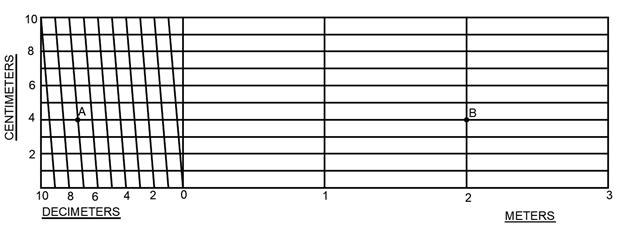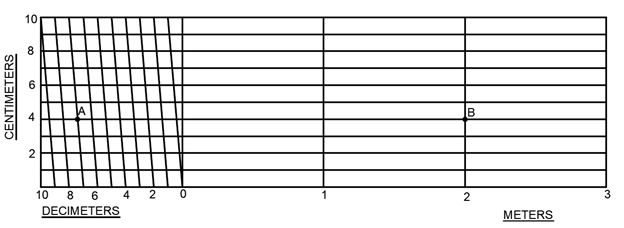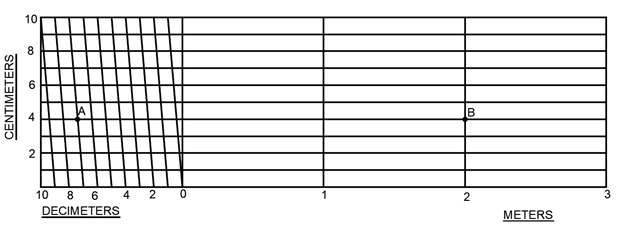EXPERIMENT NO. 2
AIM: Identify and indicate various properties possessed by following metals:
Copper
Brass
Gun metal
Cast Iron
High Speed Steel
Aluminium
cast iron
THEORY:
COPPER: Copper is a chemical element with symbol Cu and atomic no 29.
Ores: Copper glance (Cu2S), Copper pyrites (CuFeS2), Malachite (CuCo3.CuO2H2), Azurite (2CuCo3.CuO2H2).
Physical and Mechanical Properties:
It is reddish- brown metal.
Pure copper is one of the best conductors of heat and electricity.
It is highly resistant to corrosion by the liquids.
If copper is heated to red heat and cooled slowly it become brittle but if cooled rapidly it is soft, malleable and ductile. The brittleness is due to the coarsely crystalline structure that develops during slow cooling.
Like aluminium, pure copper does not costly.
Copper can be welded at red heat.
Copper has a melting point of 1,984.28 °F (1,084.6 °C) and a boiling point of 4,643.6 °F (2,562 °C).
It has a specific gravity is 8.9 and electrical resistivity is 1.682 micron ohms per cm.
It tensile strength varies from 300 to 470 MN/m2.
It form important alloys like bronze, brass and gun metal.
The density of copper is 8.96 g/cm2.
It is strongly attacked by nitric acid but only very slowly by hydrochloric and sulphuric acid in the absence of air; ammonium solution also attacks copper.
USES:
Largely used as electrical cable and wire and In electronic circuit.
Used in electroplating, electrotyping and for soldering bits.
Used as a damp proof material and for making alloys.
It is used for sheeting, roofing, spouts, boilers, condensers and other purposes where corrosion resistance with fair strength and flexibility is essential.
BRASS: Brass is a metal alloy made of copper and zinc; the proportions of zinc and copper can be varied to create a range of brasses with varying properties. It is a substitution alloy: atoms of the two constituents may replace each other within the same crystal structure. The relatively low melting point of brass (900 to 940 °C, 1652 to 1724 °F, depending on composition) and its flow characteristics make it a relatively easy material to cast.
Manganese Brass: Manganese is generally added in the form of ferromanganese.
Composition: Copper (Cu) = 60%; Zinc (Zn) = 38% to 42%; Mn= 0.5% to 1.5%; Iron (Fe) = 0.5% to 1.5%.
Properties:
It is exceeding toughness.
It has high resistance to corrosion even in sea water.
It is very active in reducing the oxide of other metal, an action that is highly useful.
In addition to its action as deoxidizer, manganese hardness and strengthens the alloys.
In cast form, the tensile strength of manganese brass lies in the neighborhood of 500MN/m2 and this is somewhat improved by working, by rolling and forging.
Uses:
It is used for hydraulic pump rods, hydraulic rams and cylinders, tubes, propellers, nut, bolts etc.
Iron brass: It is also known as delta metal.
Composition: Copper (Cu) = 60%; Zinc (Zn) = 37%; Ferrous (Fe) =3% (also some quantity of Ni or Mn).
Properties:
It is hard, strong and tough.
It is easily cast.
Its tensile strength is about two fifth greater than brass of similar composition with the iron omitted.
It resists corrosion.
Uses:
It is used for mild steel if corrosion is to be resisted.
Tin brass: It increases the hardness and tensile strength but amount employed should not exceed about 2%, because with higher amount the ductility begins to decrease. It is also called naval brass.
Composition: Copper (Cu) = 60%; Zinc (Zn) = 39.2%; Tin (Sn) =0.75% to 1%.
Properties:
It has high strength and hardness.
It has excellent corrosion resistance property.
Its tenacity is high and has good working qualities.
Its tensile strength is 56 ksi.
Uses: It is used in naval construction.
Lead brass: Lead increases the softness of brass. The addition of lead also seals shrinkage pores to provide pressure tightness.
Composition: Lead (Pb) = 2%.
Properties:
The leaded brasses are used for copper base screw machine material.
The alloys have excellent machinability, good strength and corrosion resistance.
If lead present in small quantity, reduces the ductility and strength, but if more than 2% it has a tendency to liquate.
Lead increases the machinability of brass as well as increasing its strength and resistance to corrosion.
Uses:
It prevents the logging of automatic machines.
Aluminium brass: The amount of aluminium added to brass does not usually exceed 3%. It raises the tensile strength but decrease the ductility.
Properties:
It has high tensile strength.
It resists corrosion better than ordinary brass.
It is in golden deep color.
Uses:
It is used in Automobile Industry.
It is used for General Engineering Purposes.
Used in Radiator.
It is used in Oil Burner Tube.
It is used for casting and forging or rolling.
Properties:
It has a crystalline, coarse granular structure.
It is hard and brittle.
It can be hardened by heating and sudden cooling but cannot not been tampered.
It can neither be forged nor welded.
It cannot be magnetized.
Its melting point is 12000C.
It is neither malleable nor ductile.
Its tensile strength fair and compressive strength good.
It becomes soft in salty water.
Uses
It is used for making bed plates, columns, rail chairs, bracket and machine parts not subjected to heavy shocks or tension.
As it does not rust easily so it is used for making sewers, drain pipes, water pipes etc.
As it is poor in tension, therefore least suitable for structural purpose.
Gray Cast Iron: Grey cast iron is characterized by its graphitic microstructure, which causes fractures of the material to have a grey appearance.
Composition: Carbon (C) = 2.5 to 3.8%; Silicon (Si) = 1.1 to 2.8%; Manganese (Mn) = 0.4 to 1%; Phosphorous (P) = 0.15% and Sulfur (S) = 0.10%.
Properties:
It is characterized by presence of a large portion of its carbon in the form of graphite flakes. Graphite flakes occupy about 10% of the metal volume.
When fractured, a bar of gray cast iron gives appearance.
It is readily cast into a desired shape in the sand moulds.
It possesses lowest melting point of the ferrous alloys.
It possesses high fluidity and hence it can be cast into complex shapes and thin sections.
It possesses machinability better than steel.
It has high resistance to wear.
It possesses high vibration damping capacity.
It has low ductility and low impact strength as compared with steel.
It associates low cost combined with hardness and rigidity.
It possesses high compressive strength.
It possesses excellent casting qualities for producing simple and complex shape.
Uses:
Main holes cover.
Machine tool structure e.g., bed, frame and details.
Frames for electric motors.
Rolling mill and general machinery part.
Cylinder blocks and heads for I.C. engine.
Gas or water pipes for underground purpose.
Ingot moulds.
Sanitary works.
Household appliances.
Tunnel segments etc.
White cast iron:
Composition: Iron (Fe) = 94%; Graphite carbon= 0.5%; Combined carbon= 3.5% and the remainder other impurities.
Properties:
Hard, brittle and cannot be machined.
So called be-cause the carbon is mostly in combined iron.
Highly resistant to wear.
Tensile strength is good.
Obtained by rapid cooling of metal.
Due to its poor fluidity its does not fill the mould freely.
White iron castings can be made in sand moulds.
White iron can also we made on the surface of a gray iron castings provide the metal is of special composition.
White iron of a particular composition is the first step in the production of malleable iron castings.
Uses:
Used for parts subjected to excessive wear e.g., in rim of freight car wheel or railway brake blocks.
Used for inferior castings and does not rust so much as gray variety.
Used for making malleable castings also.
Molted cast iron:
Composition: Iron (Fe) = 93.5%; Graphite= 1.75%; Combined carbon= 1.75% and the remainder impurities.
Properties:
Mixture of the two states, gray cast iron and white cast iron.
Strength and hardness vary according to the ratio of free carbon to combined carbon.
Fewer tendencies to rust than gray variety.
Fluidity is good.
Hard and brittle.
Uses:
Used for manhole covers and pipes.
Also employed for making plugs and lamp posts.
Nodular cast iron:
Composition: Carbon (C) = 3.2 to 4.2%; Silicon (Si) = 1.1 to 3.5%; Manganese (Mn) = 0.3 to 0.8%; Phosphorous (P) = 0.08% and Sulfur(S) = 0.2%.
Properties:
In nodular cast iron graphite appears as rounded particles or nodule or spheroids (unlike long flakes as in gray cast iron).
It possesses very good machinability.
Soft annealed grades of nodular cast iron can be turned at very high feed and speeds.
It possesses damping capacity intermediate between cast iron and steel.
It possesses excellent castability and wears resistance.
The properties of nodular cast iron depend upon metal composition and cooling rate.
Uses:
Steel mill rolls and mill equipment.
Power transmission equipment.
Valves and fitting.
Pumps and compressors.
Construction machinery.
Internal combustion engine.
Paper industries and machinery.
Farm Implements and tractors.
Malleable cast iron:
Composition: Carbon (C) = 2 to 3 %; Silicon (Si) = 0.6 to1.3%; Manganese (Mn) = 0.2 to 0.6%; Phosphors (P) = 0.15% and Sulfur (S) =0.10%
Properties:
It possesses high yield strength.
It can be hammered and rolled to different shapes.
It has high Young’s modulus and low coefficient of thermal expansion.
It possesses good wear resistance and vibration damping capacity.
It has shrinkage of1.5mm/100mm.
It has low to moderate cost.
It is soft, tough and easily machined.
Uses:
Differential and steering gear housing.
Brakes pedals.
Hangers
Agriculture equipments
Automotive crankshaft.
Tractor springs.
Washing machine parts.
Universal joint yoke.
Rail, road, etc.
ALUMINIUM: Aluminium or aluminum is a chemical element in the boron group with symbol Al and atomic number 13.
Physical and chemical properties:
Pure aluminium has silvery and luster, while the commercial grades show a characteristics bluish tinage.
The high purity has a much greater resistance to corrosion then the ordinary steel.
It is ductile and malleable.
Its specific gravity is 2.7.
It proportion to its weight it is quite strong.
Melting point is 6580C, Boiling point is 20570C.
Its electrical resistivity is 2.669 microns ohms/cm3 at 200C.
It tensile strength varies from 95 to157 MN/m2.
It is a good conductor of heat and electricity.
It forms useful alloys with iron, copper, zinc and other metals.
It is light in weight as compared to other metals.
Uses:
Aluminium foil is used as silver paper for packing chocolates etc.
It is used for making plane parts.
Duralumin:
Composition: Aluminium (Al) = 94%, Copper (Cu) = 4%, Mg, Mn, Si, Fe = 0.5% each.
Properties:
It can be cast, forged and stamped.
It has high tensile strength.
It possesses high electrical conductance.
It hardness spontaneously when exposed to room temperature.
The alloys of soft enough soft workable period after it has been quenched
The temperature employed for the solution heat treatment of the alloy is the lowest that is applicable to any commercial light alloy.
Specific gravity =2.8.
Melting point =6500C.
Brinell hardness; Annealed = 60, age hardened = 100.
Uses:
It is widely use for sheets, tubes, forging, rivets, nuts, bolts and similar parts.
It is also extensive used for air planes and other machines where weight is a deciding factor.
Used for making cables.
It is also employed in surgical and orthopedic work and for non magnetic and other instrument parts.
Y-Alloy :
Composition: Al =92.5%, Cu = 4%, Ni =2%, Mg = 1.5%
Properties:
Its strength at 2000C is better than aluminium.
It retains its high strength and hardness at high temperature.
It can be easily cast and hot worked.
Uses:
It is extensively used for such components as piston cylinder heads and crank cases of internal combustion engines.
It is also used for die castings, pumps rods and in sparking chisel in the place of steel.
Magnelium:
Composition: Al = 85 to 95%, Cu = 0 to 0.25%, Mg = 1 to 5.5%, Ni = 0 to 1.2%, Sn = 0 to 3%, Fe = 0 to 0.9%, Mn = 0to 0.03%, Si = 0.2 to 0.6%.
Properties:
Light weight.
Tensile strength – Annealed state: 200N/mm2< cold worked state: 280N/mm2.
Elongation - Annealed state: 30%; cold worked state: 7%
Alloy is brittle.
Castability poor.
Machinability good.
Can be welded.
Uses:
Mostly used in the aircraft and automobile industries. Some of parts made from magnelium are: Gearbox housing, Vehicle door handles, luggage racks, coffee grinder parts and ornamental fixtures.
GUN METAL: Gunmetal, also known as red brass in the United States, is a type of bronze – an alloy of copper, tin and lead.
Composition: Cu = 88%, Sn = 10%, Pb = 2%.
Properties:
Tensile strength is 270 MN/m2.
Brinell hardness is 65.
Elongation in 5 cm length is 20%.
Uses:
It is used for general casting purposes, especially to resist marine corrosion, suitable for bearing when lubrication is good.
HIGH SPEED STEEL: High-speed steel (HSS or HS) is a subset of tool steels, commonly used in tool and cutting tools. It is often used in power-saw blades and drill bits. It is superior to the older high-carbon steel tools used extensively through the 1940s in that it can withstand higher temperatures without losing its temper (hardness). This property allows HSS to cut faster than high carbon steel, hence the name high-speed steel. The addition of 5 to 8% cobalt to HSS imparts higher strength and wear resistance
Composition: Tungsten = 18%, Chromium = 4%, and vanadium = 1% with a carbon content of 0.6 to 0.7%.
Properties:
High working hardness.
High wear resistance.
Excellent toughness.
Compressive strength.
High retention of hardness and red hardness.
Strength to prevent breakage on the cutting edge. The influence of alloying elements on steel properties: Carbon.
Uses:
High Speed Steel is a cutting tool material used in drilling, milling, turning, threading, boring, broaching, gear cutting and many other machining operations.
High Speed Steel is used for form tools, slitter knives, guillotine knives, parting tools and many other types of cutting tools.

































